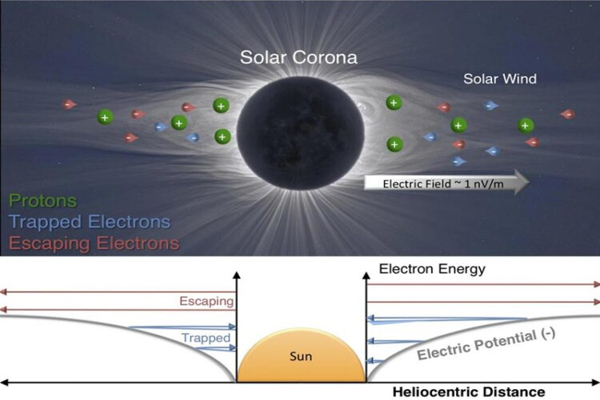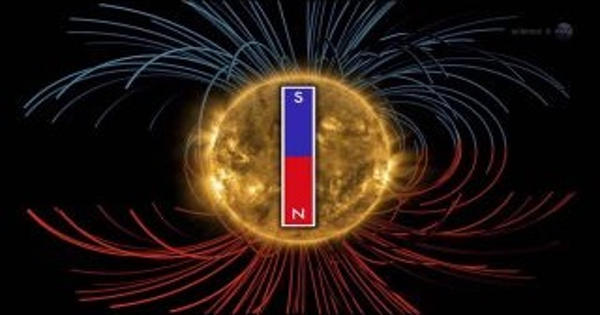The sun’s electric field has been explained in greater depth by physicists. The flow of electrons streaming from the sun was detected by the researchers as the Parker Solar Probe spacecraft made its closest visit to our home star yet. As the Parker Solar Probe gets closer to the sun, we learn more about our home star.
In a recent study, physicists led by the University of Iowa reveal the first definite measurements of the sun’s electric field and how it interacts with the solar wind, a fast-flowing current of charged particles that can disrupt Earth’s activities ranging from satellites to telecommunications.
The physicists computed the distribution of electrons within the solar’s electric field, a feat made possible by the Parker Solar Probe’s proximity to the sun of 0.1 astronomical units (AU), or 9 million miles – the closest any spacecraft has come. The physicists were able to more clearly discern the magnitude, width, and scope of the sun’s electric field from the distribution of electrons than had previously been done.
Electrons are attempting to flee, but protons are attempting to draw them back. This is the electric field. If there were no electric field, all the electrons would rush away and be gone. But the electric field keeps it all together as one homogenous flow.
Dr. Jasper Halekas
“The key point I would make is you can’t make these measurements far away from the sun. You can only make them when you get close,” says Jasper Halekas, associate professor in the Department of Physics and Astronomy at Iowa and the study’s corresponding author. “It’s like trying to understand a waterfall by looking at the river a mile downstream. The measurements we made at 0.1 AU, we’re actually in the waterfall. The solar wind is still accelerating at that point. It’s really just an awesome environment to be in.”
The interplay of protons and electrons formed when hydrogen atoms are stripped apart under the extreme heat generated by fusion deep within the sun produces the sun’s electric field. Electrons, with weights 1,800 times that of protons, are pushed forth in this atmosphere, less limited by gravity than their heavier proton brethren. However, because of the familiar attraction forces of oppositely charged particles, the protons, with their positive charge, exert some control, reining in some electrons.

“Electrons are attempting to flee, but protons are attempting to draw them back. This is the electric field “says Halekas, a co-investigator with the Parker Solar Probe’s Solar Wind Electrons, Alphas, and Protons instrument, which launched in August 2018. “If there were no electric field, all the electrons would rush away and be gone. But the electric field keeps it all together as one homogenous flow.”
Consider the sun’s electric field to be a huge bowl, with electrons rolling up the sides at varying speeds. Some electrons, or marbles in this metaphor, are fast enough to cross over the bowl’s lip, while others are too slow and eventually roll back toward the bowl’s base.
“We are measuring the ones that come back and not the ones that don’t come back,” Halekas says. “There’s basically a boundary in energy there between the ones that escape the bowl and the ones that don’t, which can be measured. Since we’re close enough to the sun, we can make accurate measurements of electrons’ distribution before collisions occur further out that distort the boundary and obscure the imprint of the electric field.”
Scientists can learn more about the solar wind, the million-mile-per-hour jet of plasma from the sun that washes over the Earth and other planets in the solar system, from these measurements. They discovered that the sun’s electric field has some impact on the solar wind, but it is less than previously imagined.
“We can now quantify how much of the acceleration comes from the sun’s electric field,” Halekas explains. “It appears to be a little portion of the overall. It is not the primary source of solar wind’s energy. This then refers to additional mechanisms that may be responsible for the majority of the solar wind’s power.”
The paper, “The sunward electron deficit: A telltale sign of the sun’s electric potential,” was published online in The Astrophysical Journal. NASA funded the research.
















